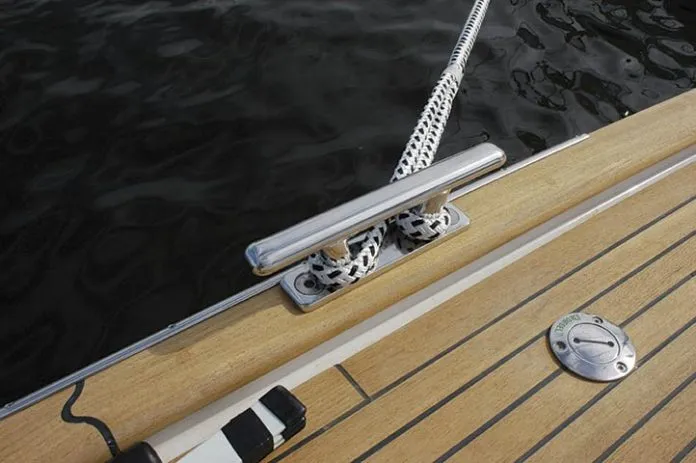Casting metal parts has been a technology in use for at least 6,000 years, and it remains the preferred approach when it comes to manufacturing sailboat cleats. Modern investment casting yields smooth symmetrical surfaces in need of less polishing. The approach can be used with zinc, aluminum, bronze, and stainless steel. Zinc, though often found chrome-plated on low-end powerboats, is too weak a metal to be used for cleats on a sailboat. Aluminum alloys are light and relatively strong as long as the casting process has kept void (air bubble) content to the barest minimum possible.
One of the biggest challenges with aluminum alloy cleats is their galvanic interaction with the stainless-steel bolts that secure them to the deck. Bronze and 316 stainless steel castings are heavy, but they are also stronger and less prone to corrosion issues. The shape of a cleat carries real significance in a variety of ways. The first and most important is how the configuration locks a line in place yet still allows a crew member to control the easing or snubbing process.
Cleats with abnormally long horns and two bolt attachment points allow more line to be wrapped around the appendage, but these long-horn cleats also present increased leverage on the base and more vulnerable end points.
The four-bolt open pattern of Herreshoff-style cleats affords greater support, and their shorter horns are less vulnerable. Some cleats come with an in-line, three-bolt pattern that offers significant strength in one direction but very little on an angle thats perpendicular to the bolt alignment. All cleats rely on good engineering practices when it comes to how they are installed.
Those retrofitting or upgrading their boats deck cleats can greatly improve the installation with a little attention given to topping and backing plates.
The former is a carefully cut and painted piece of G-10, or homemade FRP layup comprising three to five units of woven roving and mat laid up on a smooth waxed surface. The solid glass laminate ends up about a quarter-inch thick, and using a cardboard template, is cut to well exceed the cleats bolt pattern footprint.
The exact shape of these topping and backing plates depends upon available space and deck shape, but the underlying principal is to provide a load-spreading capacity both above deck and below. The topping and backing plate are best bonded in place with a gap-filling epoxy putty prior to cleat attachment.
When the epoxy putty has cured, the cleat can be fitted, holes drilled and a sealant used on the fasteners during the installation. If a raw balsa or low-density foam core is exposed in the newly drilled holes, the extra time spent hooking out a half-inch perimeter around the hole and filling it with epoxy putty will pay off in the long run. Be sure to plug or seal the bottom of the hole before filling the holes with epoxy putty. Once it cures, re-drill the holes and install the cleat.
For related articles: see
Practical Sailor Takes a Close Look at the State of Boat Cleats
Trouble Free Deck Hardware Installation
A Better Way to To Mount Deck Hardware
How Big Does a Backing Plate Need to Be?

































Dear Sir
Would you please send me best offer for cleat capacity 3 ton and made of stainless steal. I would appreciate if you could send general dimension.
best regards
farshad
Iran